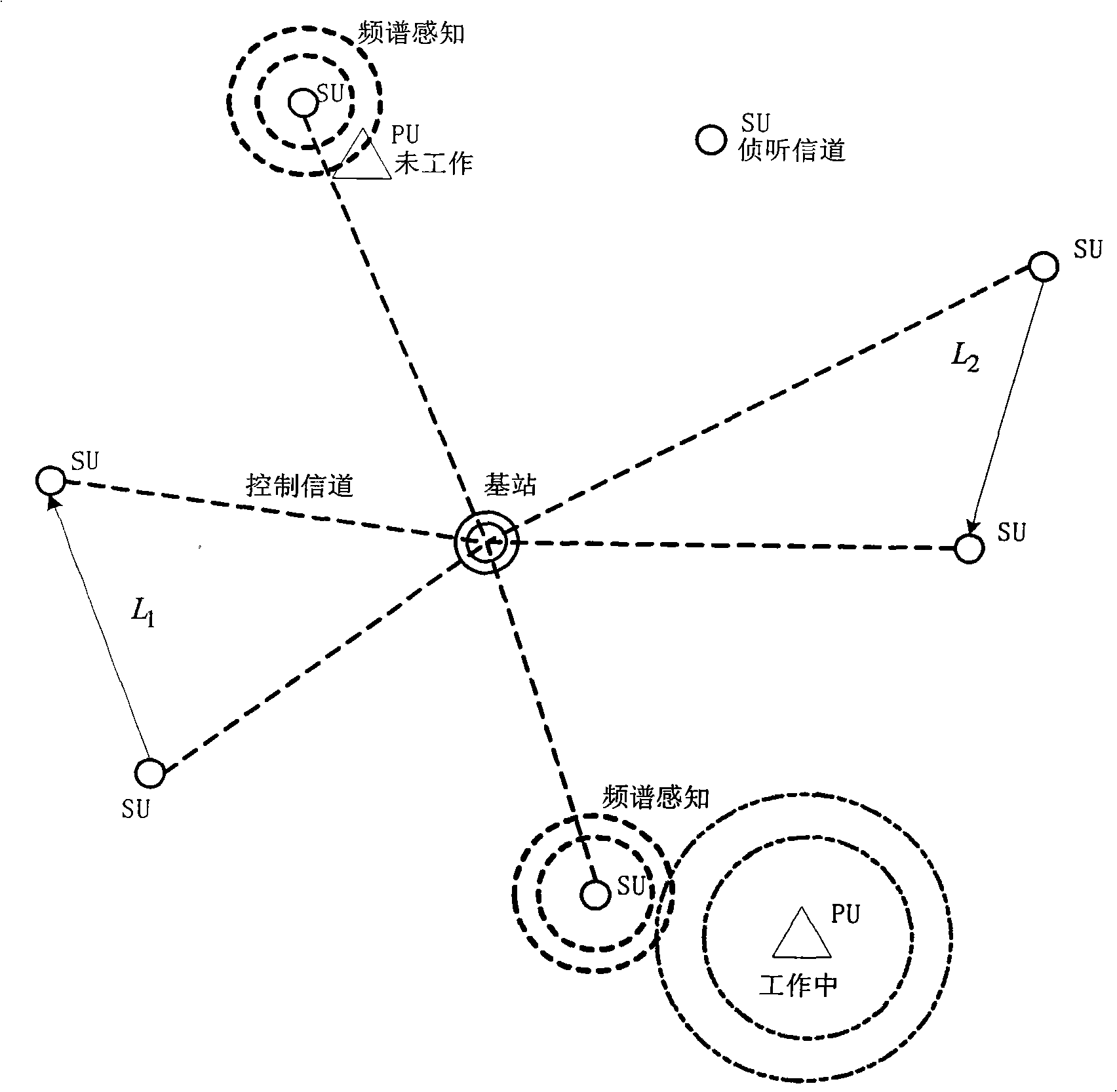Across layer self-adapting paralleling channel allocating method of cognized radio system
A cognitive radio and channel allocation technology, applied in the field of cross-layer self-adaptive parallel channel allocation, can solve the problems of low spectrum resource utilization and no consideration, and achieve flexible allocation, low interference, and improved capacity and spectrum utilization rate effect
- Summary
- Abstract
- Description
- Claims
- Application Information
AI Technical Summary
Problems solved by technology
Method used
Image
Examples
Embodiment Construction
[0016] The objects and effects of the present invention will become more apparent by describing the present invention in detail below.
[0017] 1. The base station establishes the control channel CC through spectrum sensing.
[0018] The base station performs spectrum sensing when initializing the network. According to the SNR of each available channel, a free channel with the best and most stable SNR is determined as the CC, and a second-best free channel is selected as the BCC. The base station broadcasts the synchronization information and the channel allocation result of the time frame in the first time slot of each time frame.
[0019] 2. The SU submits a channel application to the base station in the uplink time slot.
[0020] SU performs spectrum sensing before submitting a channel application, maintains a list of available channels and the SNR of each available channel, arranges the available channels in order of SNR from high to low, and adds a specific number of ava...
PUM
 Login to View More
Login to View More Abstract
Description
Claims
Application Information
 Login to View More
Login to View More - R&D
- Intellectual Property
- Life Sciences
- Materials
- Tech Scout
- Unparalleled Data Quality
- Higher Quality Content
- 60% Fewer Hallucinations
Browse by: Latest US Patents, China's latest patents, Technical Efficacy Thesaurus, Application Domain, Technology Topic, Popular Technical Reports.
© 2025 PatSnap. All rights reserved.Legal|Privacy policy|Modern Slavery Act Transparency Statement|Sitemap|About US| Contact US: help@patsnap.com



